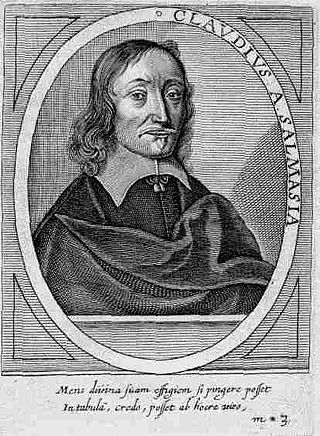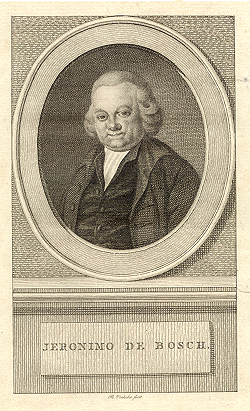Palladas was a Greek poet, who lived in Alexandria, Egypt.
Maximus Planudes was a Byzantine Greek monk, scholar, anthologist, translator, mathematician, grammarian and theologian at Constantinople. Through his translations from Latin into Greek and from Greek into Latin, he brought the Greek East and the Latin West into closer contact with one another. He is now best known as a compiler of the Greek Anthology.

Claude Saumaise, also known by the Latin name Claudius Salmasius, was a French classical scholar.

The Greek Anthology is a collection of poems, mostly epigrams, that span the Classical and Byzantine periods of Greek literature. Most of the material of the Greek Anthology comes from two manuscripts, the Palatine Anthology of the 10th century and the Anthology of Planudes of the 14th century.
Anyte of Tegea was a Hellenistic poet from Tegea in Arcadia. Little is known of her life, but twenty-four epigrams attributed to her are preserved in the Greek Anthology, and one is quoted by Julius Pollux; nineteen of these are generally accepted as authentic. She introduced rural themes to the genre, which became a standard theme in Hellenistic epigrams. She is one of the nine outstanding ancient women poets listed by Antipater of Thessalonica in the Palatine Anthology. Her pastoral poetry may have influenced Theocritus, and her works were adapted by several later poets, including Ovid.

In book publishing, an anthology is a collection of literary works chosen by the compiler; it may be a collection of plays, poems, short stories, songs or excerpts by different authors.
Straton of Sardis was a Greek poet and anthologist from the Lydian city of Sardis.
Meleager of Gadara was a poet and collector of epigrams. He wrote some satirical prose, now lost, and some sensual poetry, of which 134 epigrams survive.
Mesomedes of Crete was a Greek citharode and lyric poet and composer of the early 2nd century AD in Roman Greece. Prior to the discovery of the Seikilos epitaph in the late 19th century, the hymns of Mesomedes were the only surviving written music from the ancient world. Three were published by Vincenzo Galilei in his Dialogo della musica antica e della moderna, during a period of intense investigation into music of the ancient Greeks. These hymns had been preserved through the Byzantine tradition, and were presented to Vincenzo by Girolamo Mei.
The Latin Anthology is a modern name given to a collection of Latin verse, from the age of Ennius to about 1000, formed by Pieter Burmann the Younger. Nothing corresponding to the Greek Anthology is known to have existed among the Romans, though professional epigrammatists like Martial published their volumes on their own account, collections of short sententiae were compiled from authors like Publilius Syrus, and small groups of verse on special subjects, like the Priapeia, also survive.

Janus Lascaris, also called John Rhyndacenus, was a noted Greek scholar in the Renaissance.

The Palatine Anthology, sometimes abbreviated AP, is the collection of Greek poems and epigrams discovered in 1606 in the Palatine Library in Heidelberg. It is based on the lost collection of Constantinus Cephalas of the 10th century, which in turn is based on older anthologies. It contains material from the 7th century BC until 600 AD and later on was the main part of the Greek Anthology which also included the Anthology of Planudes and more material.
Antiphanes of Macedon is the author of ten epigrams in the Greek Anthology; one of these is headed as Antiphanes of Megalopolis and may be by another poet.

Hieronymus de Bosch or Jeronimo de Bosch was a Latin poet and notable scholar from the Netherlands. He wrote several books, the most important of which was the "Anthologia Graeca", containing the Anthology of Planudes with Latin translation.
Syllogae minores is a term used in literature to describe small collections of Greek epigrams, which are part of the so-called Greek Anthology, the collection of Greek epigrams. The term "Syllogae" comes from the Greek word "Συλλογαί" (collections), while the term "minores" (minor) is used to distinguish them from the large and important collections of Palatine Anthology and the Anthology of Planudes. Some of these collections are important because of the epigrams which contain some not found in any of the other collections, while others are highly dependent on known sources, mainly of the Anthology of Planudes.
Immanuel Gottlieb Huschke was a German classical philologist.

The main Ancient Greek terms for riddle are αἴνιγμα and γρῖφος. The two terms are often used interchangeably, though some ancient commentators tried to distinguish between them.

The collection of the Marciana Library contains 4,639 manuscripts and 13,117 manuscript volumes. Its historical nucleus is the private collection of Cardinal Bessarion, which was donated to the Republic of Venice in 1468.
Besantinus was a Greek epigrammatist of the Roman period who flourished in Hadrian's era and was possibly from Rhodes.









